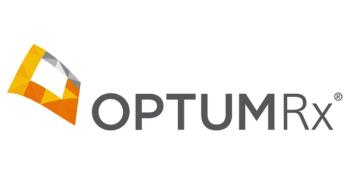
States Become More Aggressive with PBM Reform
State efforts are aiming to bring more disclosure and transparency to PBM practices, mandating certain pharmacy reimbursement levels, requiring 100% pass-through rebates, and prohibiting spread pricing.
Over the last few years, Congress has tried to pass some type of reform of pharmacy benefit managers (PBMs). There continues to be bipartisan agreement on the need for change in PBMs’ business practices, but little agreement on what that should look like.
The House recently passed a reconciliation bill that contains some measures — including the prohibition of spread pricing in Medicaid, transparency requirements in Medicare Part D, and a measure that would require a flat fee payment structure for PBMs in Medicare Part D —
In the void left by the absence of reform at the national level, states have stepped in to regulate PBMs and their relationships with pharmacies. In 2024 alone, there were 33 bills passed focused on PBM reform across about 20 states. All 50 states are currently considering bills that would impact PBMs or drug benefits. Panelists during a recent webinar hosted by LucyRx, a fee-based, fiduciary PBM, addressed the impact of states’ efforts and the need for plan sponsors to have the right strategies in place.
Early on, states were more focused on the licensing of PBMs. “PBMs play an important role in creating a set of utilization controls and leverage to help maintain costs,” Michael Niarchos, managing director at Alvarez & Marsal, a consulting company. “But as we’ve seen, a consolidation within the industry has created new incentives and structures for how benefits are designed and provided that have real impacts not only on beneficiaries but also on pharmacies and other constituent groups.”
He said efforts at reform are an attempt to find reasonable compromises to continue to allow for the management of low-cost care without some of these impacts on other stakeholders.
Over the last few years, a second wave of legislation has focused on broader reforms. State efforts are now aiming to bring more disclosure and transparency to PBM practices, mandating certain pharmacy reimbursement levels, requiring 100% pass-through rebates, and prohibiting spread pricing.
“There are common themes that plans should be studying and understanding and having conversations with their PBM so that when those common themes coalesce into one piece of legislation, both the plan and the PBM are prepared to step in and make any necessary changes,” Theresa C. Carnegie, an attorney with Mintz who works with health plans and PBM, said during the webinar.
New PBM Laws
Florida, Carnegie said, is one key state that has implemented new PBM regulations, which she called a “sweeping and very aggressive PBM reform bill.”
The
Self-insured Employee Retirement Income Security Act (ERISA) plans could be subject to the new requirement in Florida as a result of the 2020 U.S. Supreme Court ruling, according to consultants from
Paul Brown, chief legal officer at LucyRx, said during the webinar that although ERISA lawyers believe the Florida PBM law should be preempted by the federal law, the state is not taking that position. “This puts employer plans and their PBMs in a really difficult position where they’re forced to comply or face the penalties,” he said. “It’s hard to tell clients to not comply with these laws, absent a decision by the Supreme Court.”
Carnegie also pointed to a more recent state regulation in Arkansas that is going to have an impact on pharmacy benefits. In April 2025, Arkansas Governor Sarah Huckabee Sanders signed
“By virtue of it happening, it gives potential momentum for it to happen in other states. I'm sure all the constituents that have an interest in this are working hard to figure out the right path forward for any kind of future legislation,” Carnegie told Formulary Watch earlier this month.
The Arkansas bill is particularly notable because it sets a precedent for other states, Niarchos said during the webinar.
He also pointed to a new law signed in January 2025 by Massachusetts Governor Maura Healy. The new law, S. 3012, establishes a PBM licensure program and creates enforcement authority for the Office of the Insurance Commissioner. The law, effective July 1, 2026, also requires insurers to cover one generic medication for diabetes, asthma, and certain heart conditions with no cost-sharing requirements for patients, as well as requires a cap on copays for one brand-name medication for each of these conditions at $25 per 30-day supply.
The Massachusetts law also requires PBMs and pharmaceutical manufacturers to submit detailed cost and pricing data, including information on rebates, administrative fees, patient cost-share, and formulary decisions.
“This is an additional step around licensure and disclosure that we haven’t seen at the state level for PBMs,” Niarchos said.
NY: The State to Watch
Carnegie said there will likely be more states implementing regulations that have a significant impact on pharmacy benefits. “It’s going to continue to be a volatile market. There will continue to be changes and innovation in the PBM space, because at the end of the day, the old model wasn’t working,” she said.
A new bill being considered by the New York Senate would change how pharmacies are paid. If passed, this would follow other states that already use NADAC for drug pricing, including Arkansas, Georgia, Kentucky, Tennessee and West Virginia. More recently, Iowa passed a new law earlier in May reimburse retail pharmacies using NADAC and provide a pharmacies with a dispensing fee. The Iowa would be effective for any contracts beginning July 1, 2025, and apply to prescription drug benefits beginning Jan. 1, 2026.
New York’s bill, Pharmacy Transparency Act
NADAC was developed by the CMS in response to an Office of the Inspector General (OIG) report in 2012 that found the average wholesale price benchmark was flawed. It is the average price paid by a retailer to buy a drug from the wholesaler. It is used to determine pricing and reimbursement of prescription drugs, but it is not a published metric and doesn’t reflect actual market prices.
“NADAC is a response to what is wrong or missing in the PBM industry based on AWP,” Kristin Begley, chief commercial officer at Capital Rx, said in an interview. “With AWP, there is financial opacity, price discrimination and misaligned economics. AWP is an inflationary price source that can be manipulated.”
Capital Rx is a PBM that launched in 2017, using NADAC pricing and charging an administration fee.
Although NADAC may not be perfect, Begley said it better matches what is happening in the pharmaceutical supply chain and provides a more accurate reimbursement to pharmacies
“NADAC is a public ledger that can’t be manipulated,” Begley said. “Anybody can have access to it, and it creates this unified process. It aligns economics between us and our end customer.”
At the federal level, several senators have introduced a bipartisan bill —
Newsletter
Get the latest industry news, event updates, and more from Managed healthcare Executive.






















































